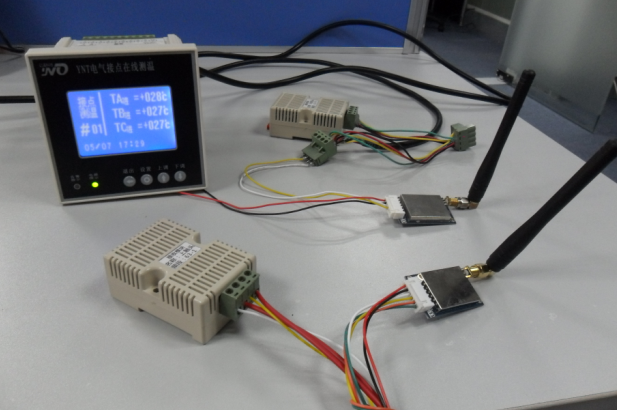Wireless multi-point temperature measurement system
The Internet of Things refers to the connection of any object to the network through information sensing equipment according to an agreed agreement, and the object exchanges and communicates through information media to realize intelligent identification, positioning, tracking, supervision and other functions.
To realize the step of uploading the information sensing device to the network, the more methods currently used are:
1. Sensing equipment can be directly connected to the network, and directly connected to the network through WIFI or traffic. This method can realize flexible communication between sensor equipment and network, but due to the high cost of WIFI module or traffic, the solution is not suitable for low-cost applications
2. Sensing equipment cannot be directly connected to the network, and can only be connected to the center through wired or radio frequency, and the center communicates with the network to upload data. This method has a low cost. However, due to the same frequency interference of radio frequency communication, multiple sensing devices cannot communicate with the center at the same time, otherwise data will be lost. An effective scheduling algorithm for the communication between the sensing devices and the center is required to ensure Stable and reliable data transmission
Advantages of wireless multi-point temperature measurement system:
Through effective node and center wireless communication scheduling algorithm to ensure the stable and reliable transmission of data from multiple nodes
Implementation plan:
This system realizes the scheduling algorithm of temperature sensor data and center. The temperature sensor communicates with the center through radio frequency, and the center uploads the data to the network.
The whole system is divided into a center and multiple nodes.
The node collects temperature sensor data and uploads the data to the center. Usually sleep, upload data to the center according to the set time.
After receiving the data, the center uploads the data to the server, and sends the calibration data and server data to the center. The time calibration data is to send the time of the center to the node, synchronize the time of the node and the center, and the clock error of the effective node.
The central realization steps are:
Step 1: Power on and monitor server data and node upload data at the same time. If there is server data, skip to step 2; if there are nodes uploading data, skip to step 3
Step 2: Modify the corresponding parameters according to the server data
Step 3: Upload the node data to the server and wait for the server to send the confirmation data
Step 4: Reply to the server to send back data and time calibration data to the node, and skip to step 1
The node implementation steps are:
Step 1: Power on, send power-on startup data to the center to obtain system data, including clock
Step 2: Set the timer to wake up and sleep according to the clock
Step 3: After waking up, read the sensor data and upload it to the center
Step 4: Wait for some time for the return from the center
Step 5: If there is a return in the center, save the data and skip to step 2
Step 6: If there is no return from the center, skip to step 2
 +86-755-23080616
+86-755-23080616
 sales@nicerf.com
sales@nicerf.com
Website: https://www.nicerf.com/
Address: 309-314, 3/F, Bldg A, Hongdu business building, Zone 43, Baoan Dist, Shenzhen, China




